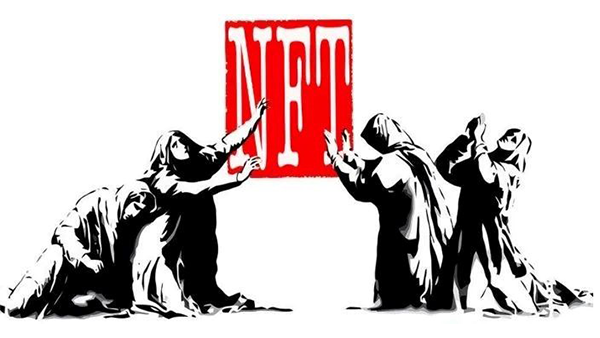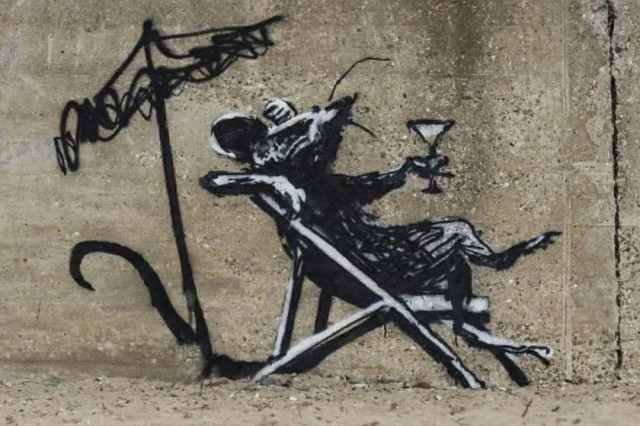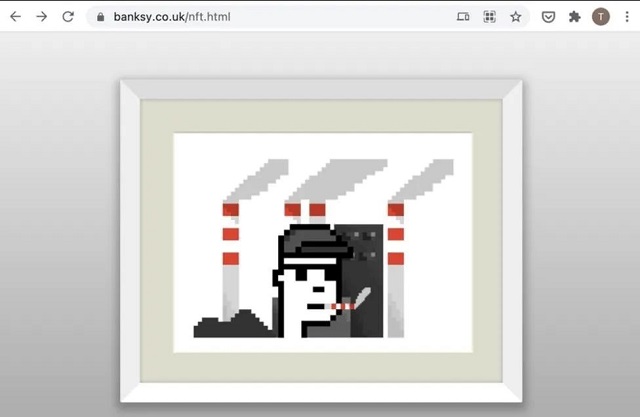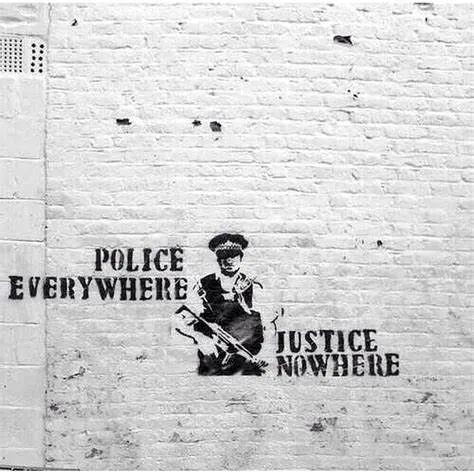
Source: Bitcoin.com
Digitalising real-world object as NFTs on the blockchain becomes popular with the concept of metaverse growing mature. An NFT, non-fungible token, is a form of digital ledger which is non-interchangeable and can be traded in the Metaverse. The digital asset can be anything, from a piece of artwork to a piece of land, and is having an emerging market.
Where there is a hype, there are counterfeits. A growing number of artworks have been sold as NFTs, many of which are not from the original work owner. Recently, Mr. Mike Lin, who called himself "the Banksy of trademarks", has revealed an NFT collection illuminating well-known Banksy's works.[1]
Mr. Lin has also shown his carefree of getting into legal troubles during his interview with World Trademark Review.[2] In other words, Banksy's work has been tokenised as a unit of data stored on a blockchain, and the "infringer" is not even afraid of being sued.

Source: nypost.com
This is not the first time that fake Banksy's work is being traded as NFTs in the market. In 2021, Banksy's website has been hacked and a fake Banksy NFT was sold through the artist's website.[3] Later, the hacker has returned all the money to the buyer except for the transaction fee of around £5,000.[4]
Based on Banksy's high reputation, there might be further similar copycats in the future. It is hard to tell whether Banksy will take actions against Mr. Lin, because Banksy is famous for his slogan "Copyright is for losers"[5]: As we saw, in 2018 Banksy still defended its trademark rights through his handling service "Pest Control." The action was taken by a handling service because Banksy wants to stay anonymous.
For street artists, staying anonymous could be a way of protecting themselves. However, this might also be the reason why Mr. Lin shows no care about infringing Banksy's copyright: because even if claiming rights through a company, the risk of disclosing identity increases.

https://www.bbc.com/news/technology-58399338
Apart from staying anonymous, protecting rights in the metaverse itself is a new challenge, especially for Intellectual Property Law, as almost all kinds of works (photos, literary, music, etc) can be digitalised and sold on marketplaces.
Metaverse complicates the protection of IP rights because the author of the work, the owner of the NFTs, the creator of the NFTs and the owner of the copyright can all be different persons or entities which enjoy various rights and obligations.
Under the current IP law system, unless the author clearly states that the ownership of the copyright is transferred to the buyer, the author owns the copyright when a real object is transferred to an NFT. This is to say that when you buy an NFT, you don't really own all the rights related to it. For instance, the ownership of the IP rights related to NFTs is not transferred by default.

Source: Pinterest
Even under the situation that the copyright is transferred to the owner, the author is unchanged and all the moral rights, such as the right of modification, always stay with the owner.
A more common scenario is that the owner of a copyright licenses a third party to make a work as an NFT. Under such a situation, both the licensor and licensee should be careful about the clauses of the license contract because at present Chinese law does not clearly define the legal attributes of NFT and its legal application.[6]
NFTs in China is more like a piece of an asset but not a kind of currency. In case of IP infringement, under Article 1195 of the Civil Code, if an NFT platform does not provide tokenisation services for NFTs, but only trading services, the platform should forward the notice of infringement in time to the relevant user who uploaded the NFTs and take the necessary measures based on the prima facie evidence of infringement and the type of service provided.
The necessary measures should be technically achievable, reasonable and without being excessive. As the NFT itself is a unique code on the blockchain, the most feasible measure is to remove NFT purchase links from the platforms. For example, if Mr. Mike Lin plans to sell the Banksy work on a Chinese platform, what Banksy can do is to prove that he is the owner of the artwork and request the platform to delete the link.

The Sotheby's auction in Decentraland featuring work from famous artists, including Banksy.
Source: www.cryptonewsmetaverse.com
The existence of NFTs, as an intangible economic asset, offers interesting possibilities for the development of IP law. In a world in which attention has become a currency, proving and protecting the identity of NFTs is essential.
The legal system on NFTs is still being built, and NFTs has not been addressed by legislation in most countries. Although it remains uncertain what will happen for Mr. Lin's fake Banksy NFTs, the critical dialogue they have generated will remain.
Footnotes
3 https://www.bbc.com/news/technology-58399338
4 https://www.bbc.com/news/technology-58399338
5 https://www.hfgip.com/zh/node/13677
6 le 3 of the Announcement on Preventing the Financing Risks of Initial Coin Offerings issued by the People's Bank and seven other departments on 4 September 2017
The content of this article is intended to provide a general guide to the subject matter. Specialist advice should be sought about your specific circumstances.
